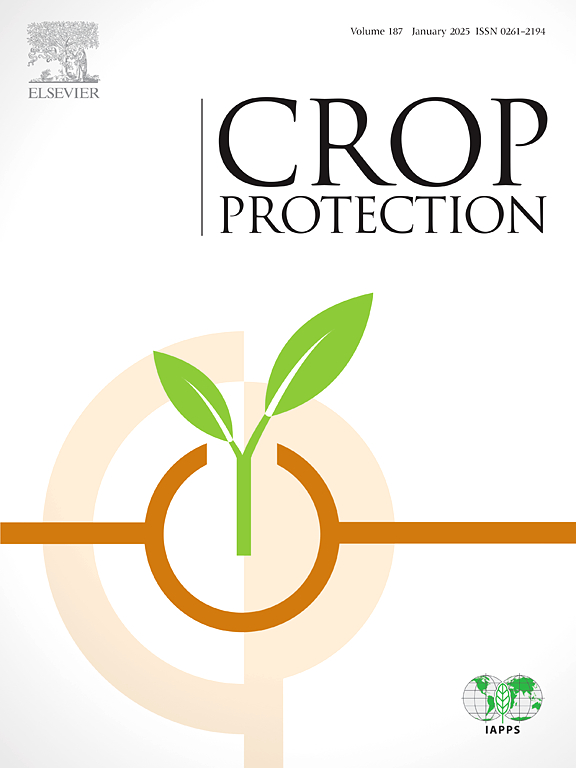Alfalfa harvest timing impacts on alfalfa weevil with agronomic and economic contexts
IF 2.5
2区 农林科学
Q1 AGRONOMY
引用次数: 0
Abstract
Alfalfa weevil (Hypera postica Gyllenhal) is a highly destructive alfalfa pest (Medicago sativa L.) in many parts of the world. Alfalfa weevil can cause significant economic damage via plant defoliation and slowed regrowth after harvest. Insecticide application is limited given developing resistance, environmental impacts, and high costs. We explored the impact of manipulating the timing of the first harvest of the season, an alternative control often referred to as “early harvest.” Impacts of harvest timing on alfalfa weevil remain poorly understood. We conducted an experiment for 2 years at a research farm in Wyoming, United States, to test how harvest timing affects damage to alfalfa, yield, quality, and alfalfa weevil densities, in comparison to treatment with insecticide. Earlier harvests were comparable in efficacy to insecticide treatment for managing alfalfa weevil. Alfalfa quality was higher in early harvests compared to later harvests resulting in a higher price per ton for alfalfa harvested earlier in the season. In the second year of the study, weevil densities were higher; alfalfa treated with insecticide had higher quality in later cuttings than untreated alfalfa, leading to increased revenue. The slight boost in revenues that insecticide treatment provided was roughly the cost of the insecticide. If higher yields and price are a priority for producers and alfalfa weevil pressure is strong, insecticides may need to be considered to allow for later harvest. Overall, an integrated pest management approach should be employed and determined based on producer goals and crop needs for optimal control of alfalfa weevil.
求助全文
约1分钟内获得全文
求助全文
来源期刊

Crop Protection
农林科学-农艺学
CiteScore
6.10
自引率
3.60%
发文量
200
审稿时长
29 days
期刊介绍:
The Editors of Crop Protection especially welcome papers describing an interdisciplinary approach showing how different control strategies can be integrated into practical pest management programs, covering high and low input agricultural systems worldwide. Crop Protection particularly emphasizes the practical aspects of control in the field and for protected crops, and includes work which may lead in the near future to more effective control. The journal does not duplicate the many existing excellent biological science journals, which deal mainly with the more fundamental aspects of plant pathology, applied zoology and weed science. Crop Protection covers all practical aspects of pest, disease and weed control, including the following topics:
-Abiotic damage-
Agronomic control methods-
Assessment of pest and disease damage-
Molecular methods for the detection and assessment of pests and diseases-
Biological control-
Biorational pesticides-
Control of animal pests of world crops-
Control of diseases of crop plants caused by microorganisms-
Control of weeds and integrated management-
Economic considerations-
Effects of plant growth regulators-
Environmental benefits of reduced pesticide use-
Environmental effects of pesticides-
Epidemiology of pests and diseases in relation to control-
GM Crops, and genetic engineering applications-
Importance and control of postharvest crop losses-
Integrated control-
Interrelationships and compatibility among different control strategies-
Invasive species as they relate to implications for crop protection-
Pesticide application methods-
Pest management-
Phytobiomes for pest and disease control-
Resistance management-
Sampling and monitoring schemes for diseases, nematodes, pests and weeds.
 求助内容:
求助内容: 应助结果提醒方式:
应助结果提醒方式:


